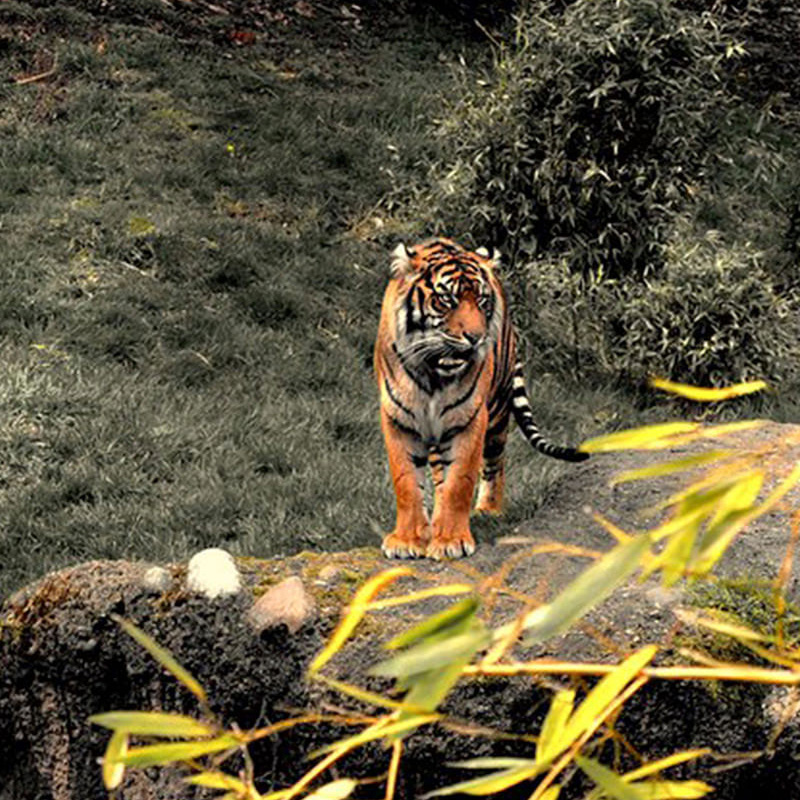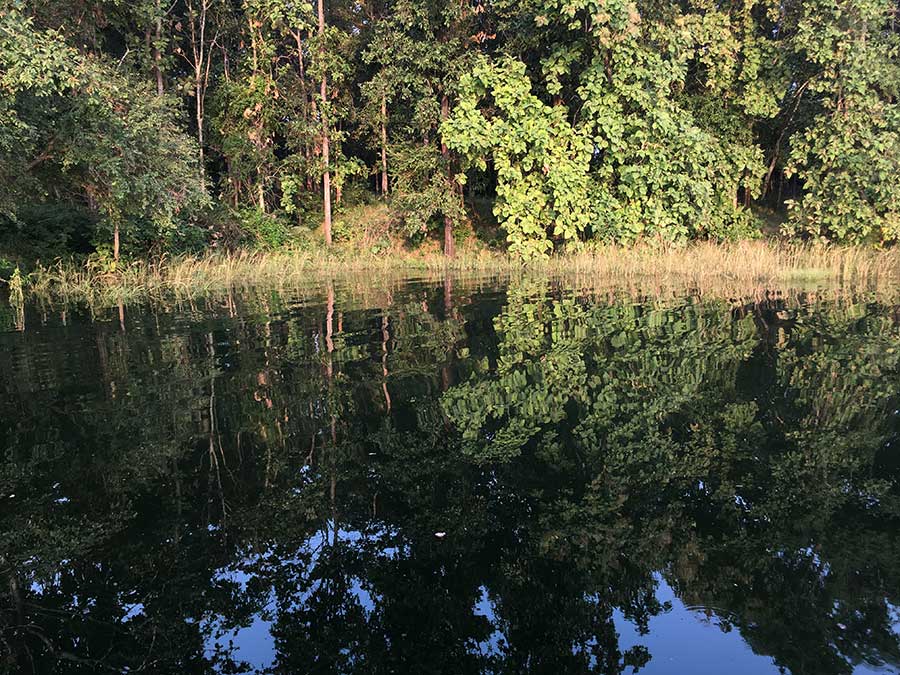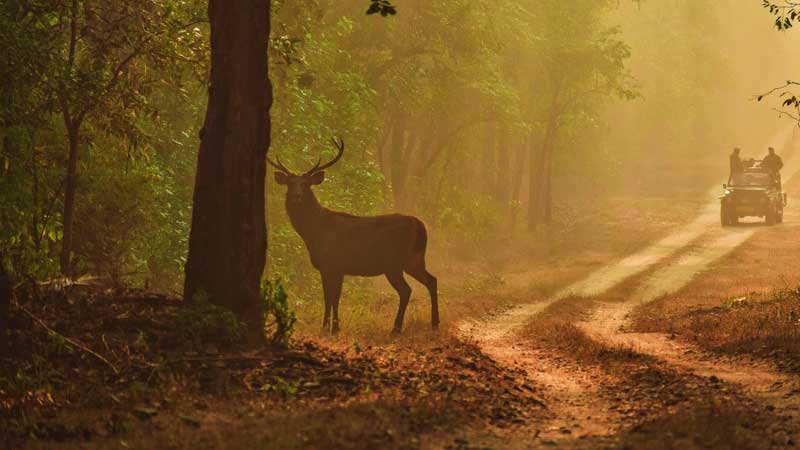

Biodiversity of Satpura National Park
The most exciting Wildlife Destination in Central India
Satpura Tiger Reserve enjoys and displays diversity in terrain to an extent that makes contrasting terrestrial features, like mountain peaks and valleys, grasslands and caves, possible here. In turn, this creates opportunity for unparalleled biodiversity in the Satpura ecosystem. Denwa river careens through Satpura Tiger Reserve, irrigating it with fresh water, making it possible to spot aquatic wildlife like crocodiles alongside terrestrial wildlife.
Rivers Narmada and Tapti originate in the Satpura Mountain Range, at Amarkantak and Multai respectively, and flow down the slopes of these aged hills creating all sorts of riffs and gorges in the process.
Satpura hills, being the result of a horst, display stunning beauty in terms of landscape, painting picturesque panoramas of deep couloirs, cloud-covered peaks, mysterious, dark caverns, waterfalls and endless forest. Presence of such varied natural features creates opportunities for diversified fauna to flourish. Through Satpura Tiger Reserve, visitors get an opportunity to witness this wildlife in its most nascent and natural form, living in the wildest (yet accessible) of habitats.

Satpura National Park (Madhai) is located in the Satpura hill range and surrounding area; mainly in the Hoshangabad District of Madhya Pradesh (near Pachmarhi). The area forms part of the largest remaining contiguous forest in India. It is, in itself, a unique area of highly natural and diverse land resources. This area is also outstanding in its bio- diversity and for many years has been a paradise for botanical scientists. The nature of the terrain, which is both rugged and largely difficult to access, has afforded the area a significant degree of natural protection.
The variety of altitude, slop and rainfall give rise to rich and luxuriant vegetation, which is among the most noteworthy in India. Both the principal timber trees of India, the North Indian Sal and the South Indian Teak are found in the area. Also present are Bamboo and mixed miscellaneous forest and a rich variety of ferns including tree ferns, bryophytes and other plant groups. The amazing diversity of plants includes around 1300 flowering and non-flowering plants are found here. Trees like Palas whose flowers streak the forest with vermilion in March. And Jamun whose fruits are relished by birds and animals alike, to ground-hugging grasses and the picturesque Bamboo that few know is really a grass.The variety of altitude, slop and rainfall give rise to rich and luxuriant vegetation, which is among the most noteworthy in India. Both the principal timber trees of India, the North Indian Sal and the South Indian Teak are found in the area. Also present are Bamboo and mixed miscellaneous forest and a rich variety of ferns including tree ferns, bryophytes and other plant groups. The amazing diversity of plants includes around 1300 flowering and non-flowering plants are found here. Trees like Palas whose flowers streak the forest with vermilion in March. And Jamun whose fruits are relished by birds and animals alike, to ground-hugging grasses and the picturesque Bamboo that few know is really a grass.
It contains a large number of rare and endemic plants, especially bryophytes and pterdiophytes like Psilotum, Cythea, Osmunda, Lycopodium & Lygodium etc. that must be protected from extinction. On higher plateaus of Satpura Tiger Reserve (National Park) Sal forests exist on Gondwana Sandstone, whereas on lower plains, Teak forests grow on basaltic traps. It is interesting to note that some species, which are not common elsewhere in Madhya Pradesh, are found in this area. These are Malastoma Malabthricum, Maraya Paniculata, Holmkildia Senguines, Blumea Lancelaria, Sophora Interrupta etc.

Though famous all over the world for the awe-inspiring Indian Bison or Gour, Satpura National Park is home to 30 species of mammals, almost 200 species of birds, over 26 species of reptiles and innumerable species of insects.
The Sanctuary harbours a great variety of wild animals including the endangered Tiger, Leopard or Panther, Wild Dog, Wolf, Sloth Bear, Indian Bison, Samber, Chital or spotted deer, Chinkara, Chousingha or Fur horned Antelope, Barking deer, Nilgai, Ratel, Pangolin, Smooth Indian Otter and Marsh Crocodile. This area has historically been renowned for Tiger, Gaur and Sambhar; the latter two supposedly in the finest sizes found in the country. At least 14 endangered species of mammals, birds and reptiles inhabit these forests. The Flying Squirrel, Indian Giant Squirrel and Mouse deer must be regarded among the most sensitive to habitat changes. Also noteworthy is the presence of both Red and Grey Jungle Fowl, which are usually, found separately either in north or South India respectively. This protected area is also a paradise for people interested in avian fauna; more than 210 species of birds can be seen, which include Malabar pied Hornbill, Malabar Whistling Thrush and the State bird Paradise Flycatcher. The area especially that around Pachmarhi to Madhai is extremely rich in butterflies and over 50 species are recorded. These include the Orange Oak Leaf, which resembles a dry leaf perfectly when sitting with its wings folded. One gets to see its brilliant orange and blue colors only when it flies or opens its wings to bask in the sun.
Meticulous efforts go into keeping madhai in its pristine form. Ever vigilant staff is posted at strategically located forest camps. They patrol the forests day in and day out, in the scorching heat of summer, in the chilling cold of winter and in the lashing of the mansoon to ensure the safety of the wildlife and of its habitats against fires, poachers and intruders.